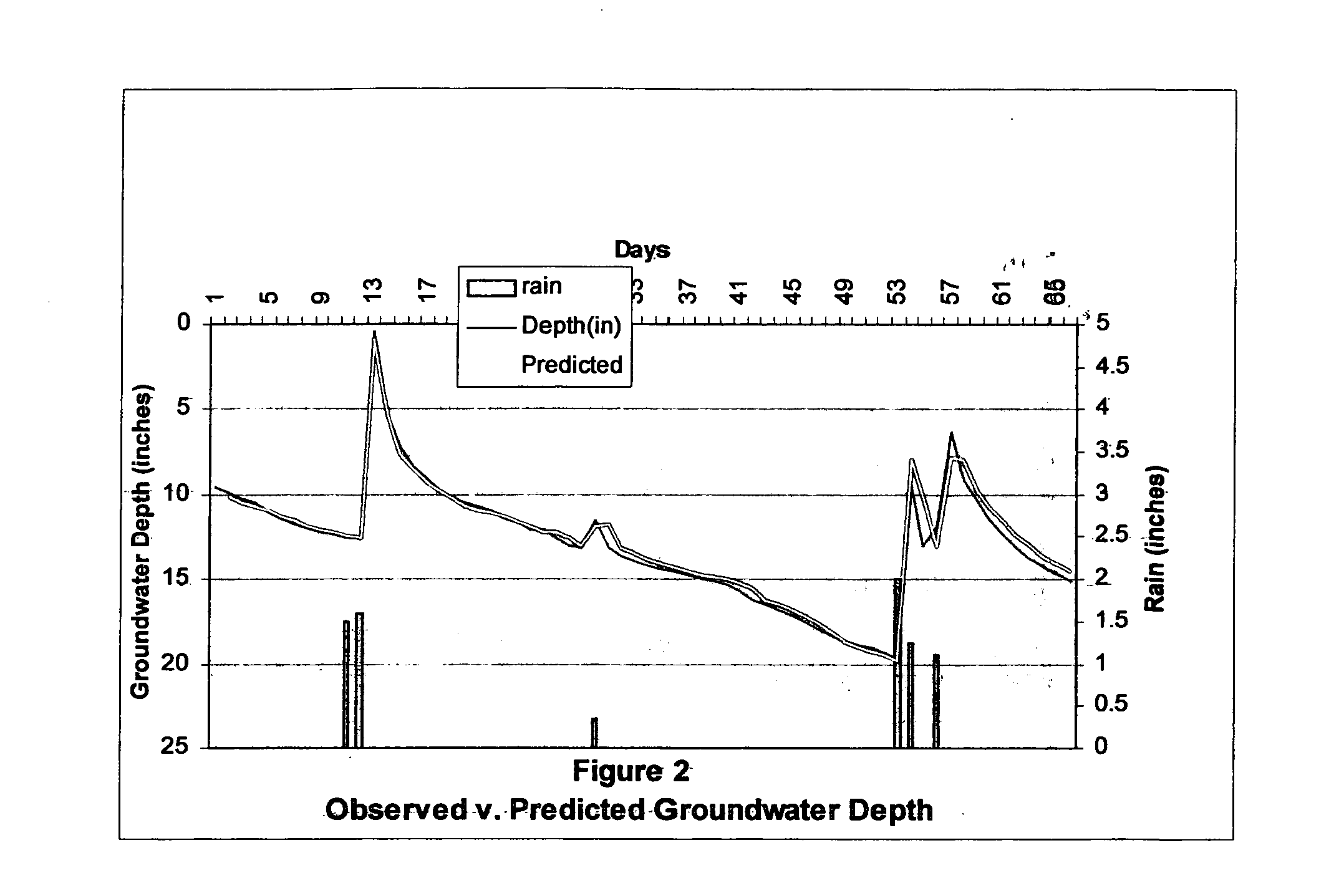Methodology for prediction of shallow ground water levels
a shallow ground water and water level technology, applied in the field of wetlands hydrology, can solve the problems of coppola not being able to determine historic frequency of inundation or saturation, and no prior art has been found using or anticipating such a process
- Summary
- Abstract
- Description
- Claims
- Application Information
AI Technical Summary
Benefits of technology
Problems solved by technology
Method used
Image
Examples
Embodiment Construction
The invented process involves groundwater level observations at the site under study to develop the average rates for groundwater level change under various meteorological conditions. These rates, together with historic rainfall data, are then used to determine the historic frequency of saturation.
Data Acquisition—The process requires on-site observations of ground water level and rainfall. This may be accomplished by use of manual depth readings in shallow wells and manually read rain gauges or by automated sensors. The required duration of the observations will vary with location and meteorological conditions, but should at a minimum, cover several rainfall events and several periods of no precipitation
Ground Water Model—For any period of time, the change in the level of ground water may be expressed as follows:
change in depth=decline+evapotranspiration−rainfall response (1)
In the above equation, decline is defined as the lowering of the ground water level due to infiltra...
PUM
 Login to View More
Login to View More Abstract
Description
Claims
Application Information
 Login to View More
Login to View More - R&D
- Intellectual Property
- Life Sciences
- Materials
- Tech Scout
- Unparalleled Data Quality
- Higher Quality Content
- 60% Fewer Hallucinations
Browse by: Latest US Patents, China's latest patents, Technical Efficacy Thesaurus, Application Domain, Technology Topic, Popular Technical Reports.
© 2025 PatSnap. All rights reserved.Legal|Privacy policy|Modern Slavery Act Transparency Statement|Sitemap|About US| Contact US: help@patsnap.com



